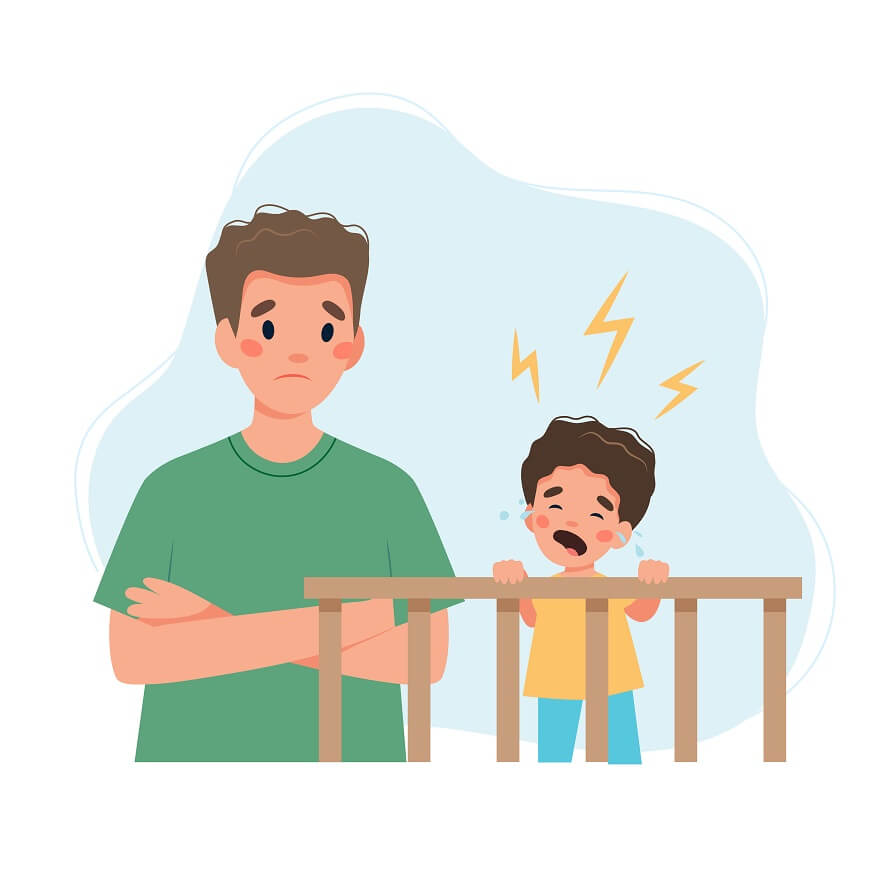Emotional Safety Definition
Emotional safety is important for children’s healthy growth and well-being. It refers to providing a safe, accepting, and supportive atmosphere for children to express and process their feelings. Emotional safety means children who feel emotionally comfortable can communicate their feelings, fears, and opinions without any hesitation about being judged or rejected.
Emotional safety definition presents the state of feeling safe, accepted, and understood when conveying emotions. It involves developing an environment in which people trust and manage their emotions without fear of negative impacts or dangers to their well-being.
Also Read: Helping your teenager to manage a meltdown: Dos and don’ts
Benefits and Importance of Emotional Safety
Emotional safety has numerous benefits and is essential for personal growth, mental health, and healthy relationships. Let’s explore some of the key benefits and the importance of emotional safety.
- Psychological well-being:
- Authenticity and self-expression:
- Trust and intimacy:
- Conflict resolution:
- Emotional resilience:
- Empathy and compassion:
- Creativity and innovation:
- Emotional intelligence:
Emotional safety provides a foundation for psychological well-being. When children feel safe to express and process their emotions, they experience a sense of relief, release, and emotional regulation. This reduces stress, anxiety, and sadness while also promoting general mental wellness.
Emotional safety allows children to embrace their authentic selves. People may openly communicate their opinions, requirements, and limits when they feel safe expressing their emotions. This results in more expressing yourself, trust, and strength.
Emotional safety definition building trust and fostering intimacy in relationships. When children feel safe to share their emotions, vulnerabilities, and insecurities, trust is established and deepened. Emotional safety nurtures closeness, empathy, and understanding, creating stronger bonds and healthier relationships.
Emotional safety meaning is how people may share their problems, points of view, and feelings in a safe atmosphere without fear of punishment. This facilitates open dialogue, active listening, and effective problem-solving, leading to resolution and growth.
Emotional safety promotes emotional resilience, enabling children to bounce back from setbacks and adversity. When people feel emotionally safe, they can process and learn from challenging experiences, develop coping mechanisms, and build emotional strength. This resilience enhances their ability to face future difficulties with confidence.
Emotional safety cultivates empathy and compassion towards oneself and others. When people feel comfortable conveying their emotions, they become more open to the emotions of others. This deepens their capacity for understanding, supporting, and connecting with others on an emotional level.
In other words, emotional safety means encouraging creativity and innovation. Kids who are not scared of being judged or criticised can explore new ideas, take chances, and think outside the box. Emotional safety fosters an environment conducive to creative thinking and problem-solving.
Emotional safety contributes to the development of emotional intelligence. Children who learn how to observe and convey their feelings to develop a better grasp of how they feel as well as the emotional states of others. This self awareness and empathy enhance their emotional intelligence and interpersonal skills.
Also Read: 12 Social-Emotional Learning Activities For Students
Emotional Safety Examples for Kids:
Here are five emotional safety examples for kids.
A child comes home from school feeling upset and frustrated because they had an argument with a friend. In an emotionally safe environment, the parent or caregiver would provide a listening ear and encourage the child to express their feelings openly. They would validate the child’s emotions by saying, “It sounds like you had a tough day. I’m here for you. How did that argument make you feel?”
During a family dinner, a child shares their opinion on a topic, but it differs from the rest of the family. In an emotionally safe environment, the family would create a safe space for open communication. They would respect the child’s perspective by saying, “Thank you for sharing your thoughts. It’s important to have different opinions. Let’s discuss it further and learn from each other.”
Emotional safety meaning is when a child is feeling anxious about an upcoming test at school. In an emotionally safe environment, the parent or caregiver would provide consistent emotional support by acknowledging the child’s anxiety and offering reassurance. “I understand that you’re nervous about the test.”
In a classroom setting, a student accidentally spills their drink, causing a mess. In an emotionally safe environment, the teacher would encourage a healthy learning environment by reacting with empathy and support. “Accidents happen, and it’s not a big deal,” the teacher would add. Let’s all pitch in and tidy things up. Everyone makes errors. What matters is how we deal with them.”
Types of Emotional Safety
Here are four types of emotional safety for kids:
- Physical Safety:
- Psychological Safety:
- Social Safety:
- Emotional Support:
Physical safety refers to creating an environment where children feel protected from physical harm or danger. It includes ensuring that the child’s surroundings are secure and free from hazards and providing appropriate supervision. Physical safety contributes to emotional safety, as children need to feel physically secure in order to feel emotionally secure.
Psychological safety is providing an environment in which children feel welcomed, appreciated, and encouraged to communicate their thoughts and emotions without fear of being judged or humiliated. It involves developing an environment in which children may take chances, ask questions, and make errors without fear of negative consequences or judgment.
Social safety encompasses creating an environment where children feel socially accepted, included, and respected by their peers and adults. It involves promoting positive social interactions, teaching empathy and kindness, and addressing any form of bullying or exclusion. Children benefit from social safety because it helps them to form healthy connections, feel connected to others, and have a feeling of connection.
Emotional support involves providing children with the emotional care and validation they need. It means being responsive to their feelings, empathizing with their experiences, and providing comfort during times of distress. Emotional support includes actively listening to their concerns, offering words of encouragement and reassurance, and helping them develop healthy coping strategies for managing emotions.
Also Read: Instilling the best social-emotional values in children, in a natural way
Conclusion:
At EuroSchool, we believe that emotional safety is essential for children’s emotional development, psychological wellness, confidence, academic accomplishment, sympathy, and general health. Parents, caretakers, and educators who concentrate on emotional safety teach their children a solid foundation for dealing with the difficulties of life, helping them to grow and understand their full abilities.










